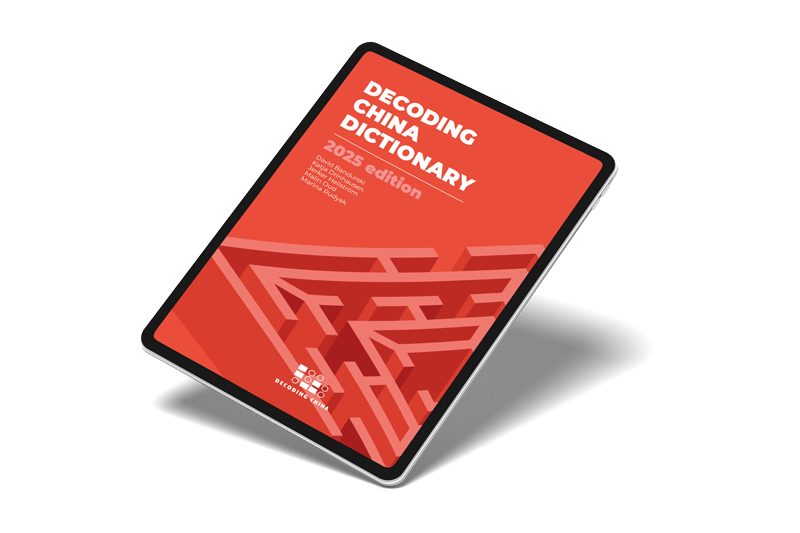
KEY TERM
Globalisation
[ 全球化 ]
[ 全球化 ]
Globalisation

Brief
Globalisation refers to the process of increasing integration and interdependence among nations, characterised by the flow of goods, services, information, and capital across borders. Early forms of globalisation emerged during the 15th and 16th centuries, when European powers expanded their trade networks and established colonies. The term “globalisation” itself became popular in the late 20th century, with the end of the Cold War, the shift towards market-oriented economies, advancements in technology and transportation, and the rise of the internet. From the Soviet Union’s collapse until the 2008 financial crisis, the dominant Western narrative celebrated economic globalisation and free trade as pathways to peace and prosperity.[1] Since the late 1990s, however, critics have called into question the desirability of a neoliberal international economic order, raising concerns about economic security, national sovereignty, and social equity.
Amidst rising anti-globalisation sentiments in the West, China has emerged as one of its main defenders. In his speech in front of political and industrial leaders at the 2017 World Economic Forum in Davos, Xi Jinping mentioned “globalisation” 24 times to much acclaim. But beneath this seemingly neutral term lies a less idealistic agenda: globalisation with Chinese characteristics is primarily about guarding against Western influence and making other countries more dependent on China.
Analysis
The PRC leadership’s attitude toward the global economy has always been characterised by a strong stance of self-sufficiency (自力更生) and economic independence. While recognising economic globalisation as an inevitable trend that presents historical opportunities for China, the leadership has from the outset cautioned about potential risks and losses if this process is not managed effectively. Nevertheless, China decided to “bravely take part in economic globalisation” while emphasising national security and self-reliance.
While China argues for the benefits of economic integration, it maintains major restrictions and strict controls over its own markets and information flows. Since joining the World Trade Organisation in 2001, China has leveraged its developing country status to navigate integration into the global economy while benefiting from certain advantages available to developing economies, such as access to transitional measures for subsidies and the ability to protect specific sectors vulnerable to international competition.
In the 1990s and early 2000s, when China primarily exported simple manufactured goods, deep trade ties raised few security concerns. However, as Chinese companies began to dominate cutting-edge technology and production of critical goods like rare earth metals, this interdependence with China began to be viewed with more scepticism.[2] Globalisation has been significantly driven by the trade of semiconductors and the electronic products they enable, resulting in an interdependent global supply chain for microchips. This dependency has created vulnerabilities that both China and the US are eager to leverage, turning semiconductor technology into a key arena in the ongoing great power rivalry, and creating a dynamic where for many leading companies, their primary customer is also their main competitor. [3] This dynamic also helps to explain why the CEO of the Swedish telecom business Ericsson went on a lobbying campaign on behalf of its main competitor Huawei, protesting the way Sweden barred Huawei equipment from the country’s 5G networks over national-security concerns after Beijing had threatened to retaliate against Ericsson’s business in China.
The current global trend of viewing economic interactions through a lens of national security reflects a shift in both how China and other nations perceive globalisation. Decoupling pressures are emanating from both the West and China as each becomes increasingly concerned about weaponised interdependence. In response to its increasing dependence on foreign semiconductors, China has implemented a “dual circulation” (国内国际双循环) strategy and plans such as “Made in China 2025”, which seek to reduce China’s vulnerability by increasing domestic consumption and through acquisition of foreign companies, technology transfer, substantial support for domestic chip firms, and significant investments in R&D. Indeed, China started “de-risking” long before the concept became a thing in Brussels.
Meanwhile, in the wake of the Trump administration’s retreat from the WTO and other multilateral institutions, Xi calls on other world leaders to resist U.S. unilateralism, protectionism and decoupling. In so doing, he positions China as a responsible major country and proponent of inclusive economic globalisation (包容性经济全球化) supporting less developed countries through low tariffs and investments.
[1] A. Roberts and N. Lamp, Six Faces of Globalization: Who Wins, Who Loses, and Why It Matters, Harvard University Press, 2021.
[2] A. Roberts and N. Lamp p.211.
[3] C. Miller, Chip War: The Fight for the World’s Most Critical Technology, Simon & Schuster, 2022.
How to cite the Decoding China Dictionary:
The Decoding China Project (eds.) The Decoding China Dictionary (2025 ed.), 2025. Berlin: The Decoding China Project. Available from: https://decodingchina.eu/.
Research related to this term was supported by:

Related Articles That Might
Interest You






